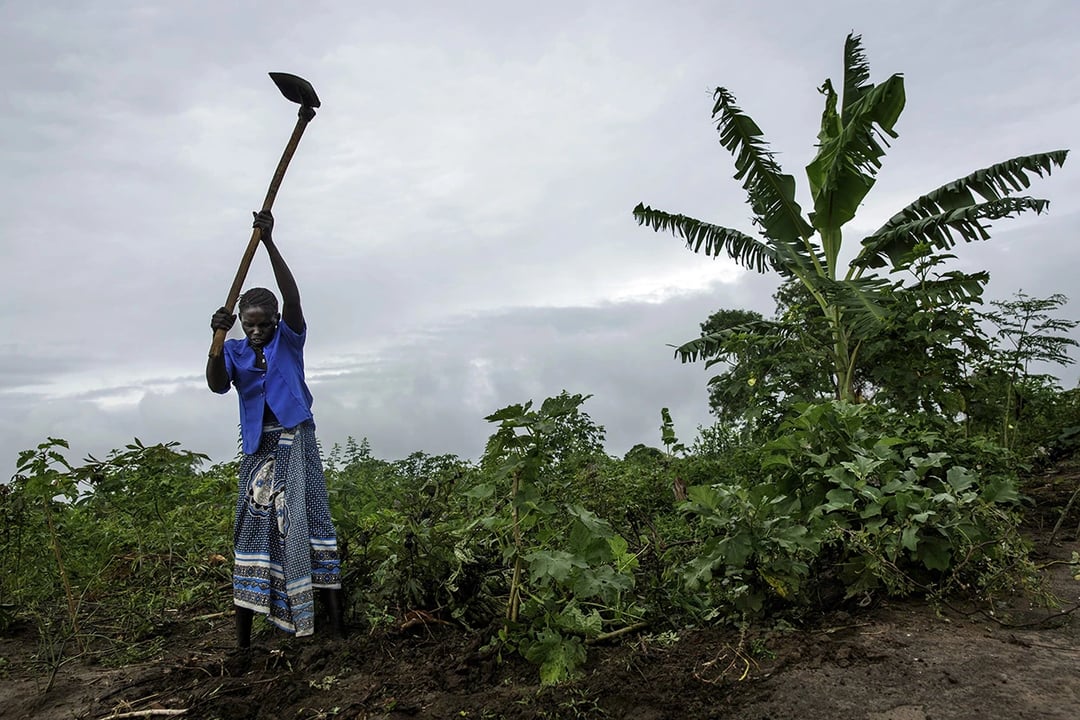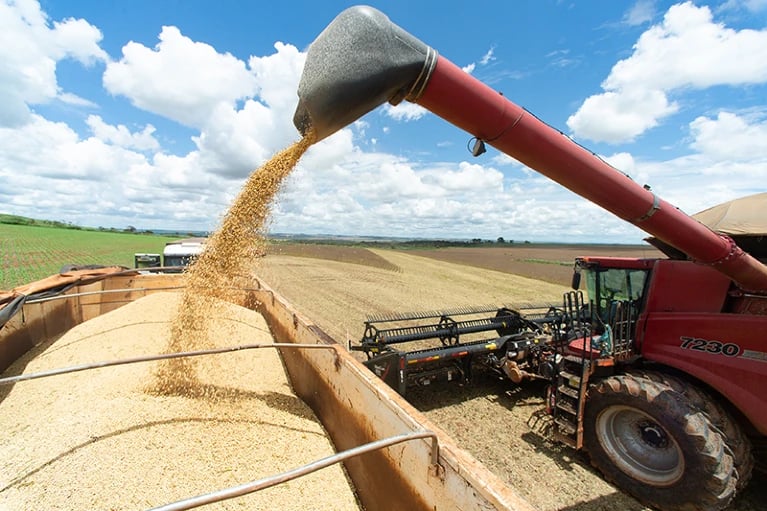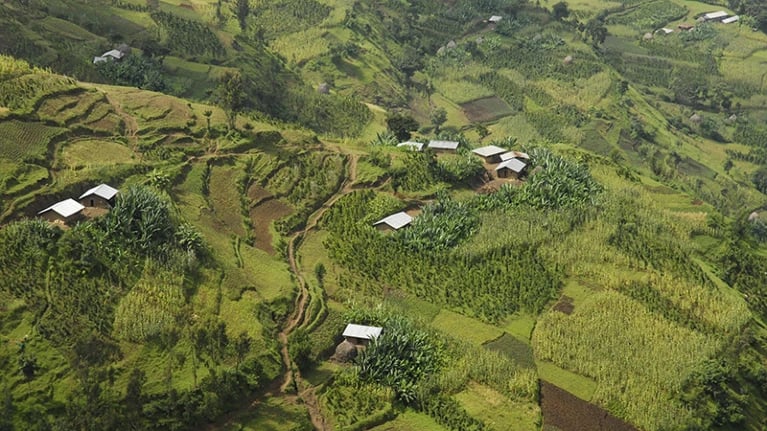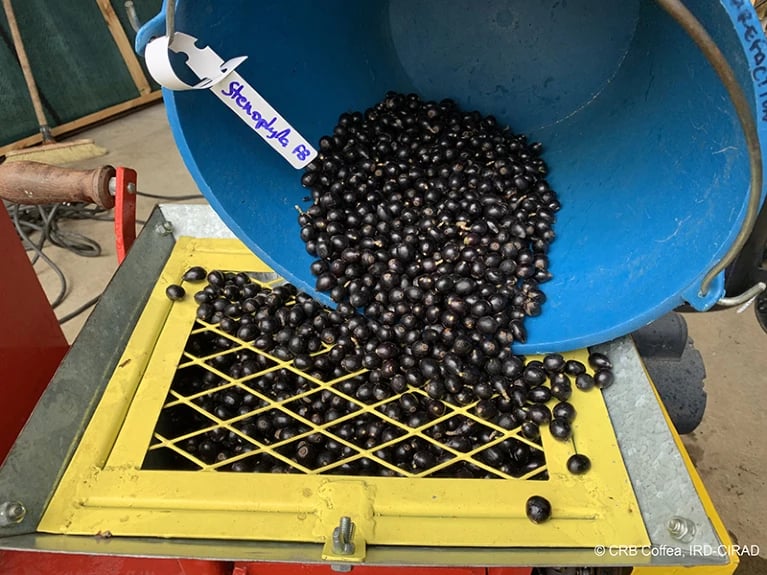May 21, 2025 | 00:10 GMT +7
May 21, 2025 | 00:10 GMT +7
Hotline: 0913.378.918
May 21, 2025 | 00:10 GMT +7
Hotline: 0913.378.918
Vietnam Agriculture News introduces the research article of Alexandre Antonelli, Director of the Royal Botanic Gardens - Kew on the scientific journal Nature. All content in this article represents the views of the author.

Farmer Angelina Monday works on her plot of land in Uganda, where she grows beans and vegetables for her family. Photo: Panos.
I grew up in Campinas, a city in southeast Brazil. The apples there, cultivated from European varieties since the 1960s, tasted sweet. But, if given the choice, I would always pick papayas grown in our garden. My father knew that growing a temperate fruit tree in a tropical country seldom worked, so instead he filled our garden with tropical ones, including two varieties of papaya. My mother, drawing on knowledge from her Indigenous roots, grew all sorts of herbs in pots around the house, which she used to treat ailments such as diarrhea and indigestion.
Indigenous peoples and other local communities, who might have lived in one region for thousands or hundreds of years, have long acted as ones who shape nature. In many parts of the world, the food production systems developed by such communities - from irrigated crops to agroforestry systems - have been the dominant food systems supporting regional economies, and feeding rural and urban areas alike.
For the past three decades, various efforts involving academic and industrial partners have explored how biodiversity in low and middle-income countries could be exploited commercially - bioprospected - for new pharmaceuticals and crop varieties, and how benefits could be shared equitably. Yet there are huge power imbalances between the wealthy countries and large corporations seeking the products, and the biodiversity-rich but economically and technologically deprived countries and communities providing them. In practice, the benefits rarely reach the people who are the knowledge holders and guardians of biodiversity and agrobiodiversity.

Soya-bean harvesting in Brazil’s Cerrado, much of which was biodiverse wooded grassland. Photo: Getty.
Today, food production is the biggest driver of biodiversity loss and contributes heavily to climate change and pollution. As such, there has never been more need to establish how Indigenous and local knowledge can contribute to the building of resilient, sustainable and nutritious food systems in a way that is equitable.
The ways in which plants are used by societies around the world have narrowed drastically over the past 500 years. This has happened largely because of efforts to maximize yield and profit, pursued with little regard for Indigenous peoples and smallholder producers and the knowledge they hold.
Consider the Cerrado in South America, where some of my Indigenous ancestors lived sustainably for millennia - now home to around 100,000 Indigenous people who represent more than 80 ethnicities. Since the 1970s, more than 40% of Cerrado’s naturally acidic soil has been transformed into agricultural land, in part through the addition of five tonnes of pulverized chalk or limestone per hectare, among other inputs. About 20% of that land is used to grow soya beans to provide fodder for cattle farms that are mainly overseas.
For humanity to progress towards a sustainable world with a secure food supply, the data now clearly show that we must change diets, reduce waste, diversify food systems - in existing or reduced agricultural land - and develop more-circular ways to produce food.
It is also becoming apparent that "climate-smart", environmentally sustainable food sources can come from underutilized plants and wild relatives of crop plants. Efforts to locate and manipulate such food sources should be guided by the communities that have long been using them, and who might be the main beneficiaries.

Enset trees surround buildings in southwest Ethiopia. The starch-filled stems are used in cooking, and the leaves as fodder and for roofing. Photo: KEW.
Bananas are one example. The seemingly incurable fungal infection Panama disease is affecting dense banana plantations across the tropics, posing a major threat to the global trade of bananas, which is currently dominated by the Cavendish variety. Yet the disease does not affect crops in Africa and Southeast Asia, where Indigenous and local communities grow hundreds of varieties that are naturally resistant to it. In Uganda alone, nearly 100 varieties of bananas contribute to the sustainable livelihoods of millions of people.
Likewise, the plant enset, also called the tree against hunger (Ensete ventricosum), is hardly known outside southwestern Ethiopia. But in this region, where it has probably grown for millennia, its starch-filled stems provide more than 20 million people with their main source of calories and nutrients. Its leaves are used to feed cattle, to provide shade and to build roofs; the stems provide fibres for basket-making; and when planted in rows, enset is used in place of fences to define land ownership and reduce conflicts. Perhaps most importantly in relation to climate change, enset is remarkably tolerant of drought and short-term temperature variations.
Almost 500 million Indigenous people, speaking at least 4,000 languages, occupy more than 25% of the global land surface. They often have the best ecological knowledge about the region they live in, and know which species are most important for their communities.
For instance, Indigenous Iban and Dusun communities in southeast Asia have long recognized that two similar-looking fruits, lumok and pingan, originate from two distinct plants. Yet for nearly two centuries, Western botanists had misclassified them as coming from a single tree species.

Coffee berries from Coffea stenophylla, a species that communities in Sierra Leone helped researchers at the Royal Botanic Gardens, Kew, and their partners to find in the wild. It can tolerate higher temperatures than the commercial species Coffea arabica, which is under threat from climate warming. Photo: IRD-CIRAD.
In principle, Indigenous and local knowledge could help to create training data sets. These could enable researchers and crop developers to find food sources that contain certain nutrients, that will tolerate anticipated climate shifts or that harbour resistance to emerging pests and pathogens.
Although Indigenous communities have yet to receive the recognition they deserve, food-security workshops involving Indigenous people and local communities are beginning to shape research agendas. Also, some Indigenous and local communities are already active in international debates about food security, biodiversity and climate change.
Governments in high-income countries could earmark part of their official development-assistance funds or other sources to support knowledge exchange within countries and between the global south and global north. They could also build national and regional infrastructure for plant breeding programmes, and revise agricultural policies and subsidies to support more-diverse, sustainable and locally adapted food systems that are built on conventional and non-conventional crops.
Yet nearly all landscapes have been actively managed and shaped by Indigenous people and local communities for millennia. Dominant narratives about ‘pristine’, people-free nature carry little, if any, regard for Indigenous and local ways of knowing, using and living in these landscapes.
Various initiatives are already helping to make biodiversity and agriculture research more accessible and inclusive. Since 2021, Africa’s continental platform for open-access publishing has made studies conducted in Africa freely available, for the primary benefit of other researchers on the continent.
Around the world, botanical gardens, natural-history museums and private and public research and development organizations are trying to forge a better way forward.
When I go back to Brazil, I always visit a local fruit and vegetable market. I spend hours chatting to the farmers, smelling and tasting the local produce and learning more about how they grow such an amazing diversity of edible plants. Their stories about what they are growing where — and most of all, their enthusiasm — give me hope that biodiversity is coming back to our lives, and will stay.

(VAN) Attempts to bring down the price of the Japanese staple have had little effect amid a cost-of-living crisis.

(VAN) Fourth most important food crop in peril as Latin America and Caribbean suffer from slow-onset climate disaster.

(VAN) Shifting market dynamics and the noise around new legislation has propelled Trouw Nutrition’s research around early life nutrition in poultry. Today, it continues to be a key area of research.

(VAN) India is concerned about its food security and the livelihoods of its farmers if more US food imports are allowed.

(VAN) FAO's Director-General emphasises the need to work together to transform agrifood systems.

(VAN) Europe is facing its worst outbreak of foot-and-mouth since the start of the century.

(VAN) The central authorities, in early April, released a 10-year plan for rural vitalization.